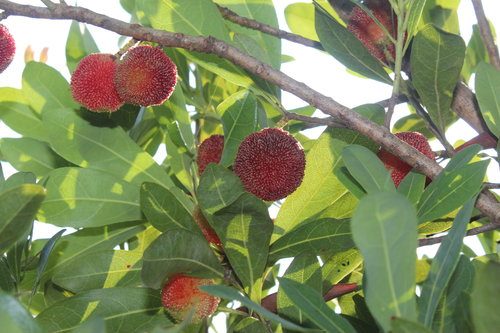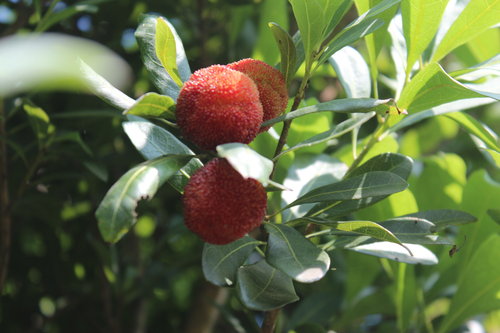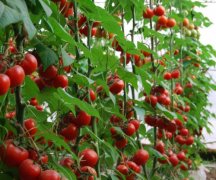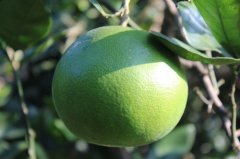What are the characteristics and uses of bayberry? Red bayberry seeds have been planted for several years before they bear fruit.
The producing area of Taiwan red bayberry is mainly planted in the low-altitude slopes in the middle and north of Taiwan, and the yield period is mostly around Ching Ming Festival in spring. There are many varieties of bayberry, the main cultivated varieties are wild bayberry, button bayberry, red bayberry, pink bayberry, snow bayberry, black bayberry. Do you know how to plant bayberry trees? Why don't we first take a look at the introduction of the characteristics of Waxberry?
Origin: Chinese mainland wild or cultivated in Guangdong, Fujian, Hunan, Zhejiang, Japan, Korea, Philippines and Taiwan south of the Yangtze River.
Distribution: distributed in the foothills of Taiwan with an elevation of 300 to 1500 meters.
Usage: 1. Horticultural street hedge has strong sex, slow growth, beautiful tree appearance, drought and barren resistance, and is suitable for street trees, landscaped trees, bird-luring trees and hedges. two。 Edible: eat raw food to quench thirst, can also do candied fruit, jam. 3. The bark is rich in tannins and can be extracted or used as medicine. 4. Wood uses: Wood sapwood is broad, grayish white, heartwood is narrow, yellowish brown, annual rings are not obvious, the material is dense and hard, and it is often used for agricultural tools or for making various utensils. 5. Medicine: red bayberry has the effect of relieving annoyance and thirst, harmonizing the five internal organs, cleaning intestines and stomach, eliminating evil qi, and has a certain curative effect on deficiency fire, thirst, fever, gastrointestinal discomfort and other diseases. Nature: root, bark: bitter, warm; fruit: sour, sweet, flat. Utility: root, bark: dissipate blood stasis, stop bleeding, relieve pain. Treatment of hematemesis, blood avalanche, hemorrhoids, injury, fracture, gastric and duodenal ulcer, enteritis, dysentery, toothache; fruit: Shengjin, thirst. Treatment of dry mouth, loss of appetite; root bark appropriate amount of powder or cooking oil to apply to the affected area to treat trauma, bleeding, burn and scald.
Stem: tree, up to 20 m tall, 60 cm to 100 cm in diameter, with straight trunk, gray-brown bark, smooth, mostly branched; branches obliquely ascending or extending horizontally, slightly pilose or smooth glabrous when young and smooth glabrous when old.

Leaves: leaves are simple alternate, multi-spirally arranged and clustered at the apex of branches, long Obovate or Obovate-lanceolate, 5 cm long, sometimes up to 15 cm, 2 cm 2.5 cm wide, sometimes up to 3.5 cm, apex obtuse or acute, base attenuate or cuneate, upper half of leaf margin scattered serrate, semi-leathery, slightly glossy green on surface, light green on back, middle ribs, lateral veins and veinlets raised on both sides Petiole short, 1-2 cm long, smooth glabrous, furrowed.
Flowers: flowers unisexual, dioecious, male flowers numerous, erect catkin arranged in spikes; inflorescences 5-9 cm long, bright red or nearly bright red; without calyx and petals, but with 2 bracts and 3-4 bracteoles; bracts ovate-triangular, 0.4-0.5 cm long, apex acute, bracteoles minute; stamens 6-8, filaments free or partially connate, seemingly branched. Anthers ellipsoid, 0.1-0.15 cm long; female flowers numerous, arranged on shorter spikes, usually only 1-2 pollinate and fruiting, bracts and bracteoles the same as male flowers, ovary ovate or rounded, surrounded by many bead-shaped protuberances, 1-loculed; style very short, apex 2-divergent stigma, stigma broadly linear, 0.6 cm long, hairy. The florescence is from March to May.
Fruit: the fruit is a drupe, globose or oval, 1.5 cm in diameter, sometimes up to 3 cm, densely covered by many cysts, initially turquoise, bright red when ripe, ripe fruit covered with cyan, juicy, sour and sweet aroma, delicious, delicious, wild birds also like to eat it, can be eaten raw or candied; 1 seed, erect, slightly homomorphic with peach kernel; mature period is about May and July.
Characteristics: evergreen trees, gray bark, stout branchlets. Leaves alternate, densely branched, stalk 2-10 cm long, leaf blade leathery, Obovate or long Obovate-lanceolate, 5-15 cm long and 1-4 cm wide, base narrowly cuneate, apex obtuse, entire or upper end inconspicuously sparsely obtuse-toothed, upper surface dark green, abaxially light green, both surfaces glabrous, with golden glands. Flowers dioecious; male inflorescences several tufted leaf axils, Terete, ca. 3 cm, yellowish red, with 1 bract, 2 bracteoles, ovate; stamens 5-6; female inflorescences ovate-long-elliptic, ca. 1.5 cm long, solitary leaf axils, flower base with bracts and bracteoles; ovary ovate, style very short, 2-branched. The fruit is a drupe, globose, 1-1.8 cm in diameter, papillary protuberant, crimson or purplish red when ripe. The florescence is from March to May. The fruiting period is from April to June. Li Shizhen's Compendium of Materia Medica says it is "shaped like salmon, but tastes like plum", so it is called red bayberry. Red bayberry is very adaptable and likes places with plenty of sunshine and good drainage. Is a famous fruit tree in China, the fruit is round, bright red when ripe in summer, eat raw food to quench thirst, can also do candied fruit, jam and so on, it is very suitable for planting in the garden to watch and attract birds. For reproduction, sowing or cutting, spring and autumn are more suitable.
To breed:
Red bayberry is generally propagated by seeds, but its growth is slow. Ungrafted seedlings take more than 10 years to blossom and bear fruit. The bayberry is graceful in shape and its leaves are green and shiny. It is suitable for ornamental trees in the garden, and it is more suitable for planting in spring.
There are many varieties of bayberry, and there are great differences in flavor. Some varieties taste sweet and suitable for fresh food, while others have small and sour fruits, which are mostly used as processing and pickling materials to make dried bayberry. Choose and buy fresh fruit with delicious color and moderate maturity as the top grade.

Nutrients: water 83.4%, protein 0.7%, fat 0.2%, sugar 8.5%, fiber 0.3%, ash 0.4%, calcium, phosphorus, iron, vitamin A.
Myrica rubra is dioecious, but it is difficult to tell whether it is female or male in appearance, and its "growing period" is very long (it will blossom and bear fruit only after 7-10 years). It is not known whether it is a female plant until it blossoms. Male plants will only blossom but not bear fruit-male flowers.
In addition to the fact that both female and male plants must be planted at the same time, dioecious fruit trees also need to pay special attention to the fact that the florescence of female and male plants must be very close, or even blossom at the same time. If the female plant blossoms first, and the female plant blossoms only after the male plant blossoms, it will be completely in vain. If only one bayberry plant can be cultivated under the limitation of space, it is recommended to cultivate the female plant, and in the juvenile period, it is suggested that a certain dry crop should be grafted into the male plant, so that the female plant can have male bud ear, and then the female plant can be pollinated when it blossoms.
Some of the characteristics of red bayberry need to be explained. She is an evergreen tree, which can grow up to 15 meters tall, blossom in February-March, and ripen in April-June. If you need pruning, you should pay attention to the flowering and fruiting branches of red bayberry, because the new branches blossom after two years, rather than the same year, so they can not be pruned indiscriminately, so as not to cause no fruit.
- Prev

How to grow tomatoes? Introduction to the precautions and skills of planting Tomato blackened at the bottom
How to grow tomatoes? Why does the bottom of the tomato turn black? What are the points for attention and skills in planting? Want to know something about it? Let's have a look together. Tomato planting method, vegetable and fruit tomato is a favorite fruit and vegetable of many people, and there are many kinds of tomato.
- Next

Sweet grapefruit and other grapefruit taste difference, sweet grapefruit nutritional value and food taboos
Sweet grapefruit is quite different from other grapefruits in taste--it tastes sweet, slightly honeyed, and people who have tasted it praise it. So the first time I saw it, people thought it was an orange, and when they knew it was also a grapefruit, their faces were full of surprise.
Related
- The first cup of black tea in spring, the flavor and history of tea gardens in Kenya, Africa
- The computer can not only choose potatoes, but also grow tea rice. AI will grow winter oolong tea champion.
- It is not only the inflated tea bitten by insects, but also engraved with the four seasons tea in Beipu.
- The Oriental Beauty Tea Festival in Zhuxian County takes the stage at the weekend to experience the plus-size feast of oil tea.
- & quot; Oriental Beauty Tea & Exploration of Emei in Hsinchu, the hometown of quot;
- The new variety of strawberry "Tainong 1" dessert is the first choice with mellow aroma. Crimson gorgeous
- History of Tea in Taiwan: from Wild Inner Mountain to Export Tea Garden
- Two types of Taiwan Oriental Beauty Black Tea won the British three-Star Award for Childhood Tea Xiang Zhang Jiaqi changed from pilot to champion tea maker.
- Banana species and varieties: the planting history of Taiwan Xianren banana and dwarf banana is long, is banana disease resistant?
- Coffee planting Technology: Qianjie Coffee from Seedling to harvesting

